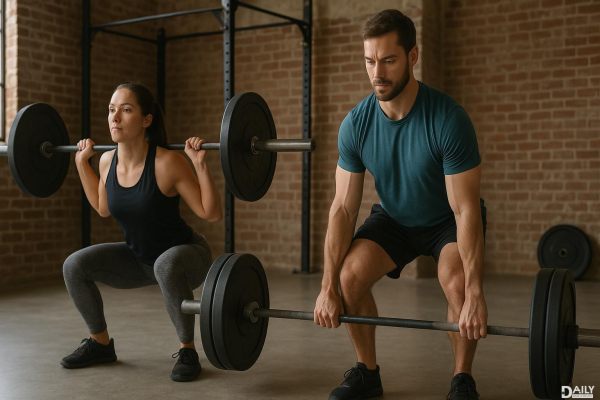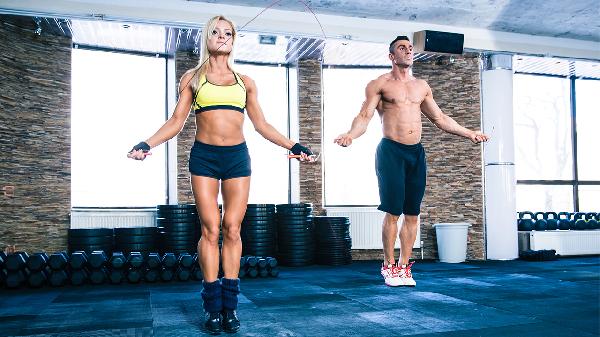Strength training is one of those things that sounds intimidating until you realize it’s basically just picking stuff up and putting it down—but with a strategy. Whether you're a gym newbie or someone who can deadlift their bodyweight before breakfast, incorporating strength exercises into your routine is a game-changer. Not only does it help you build lean muscle (hello, toned arms), but it also strengthens bones, boosts metabolism, and—let’s be real—makes everyday tasks like carrying groceries or lifting a suitcase way easier. If you’ve been sleeping on resistance training, consider this your wake-up call.
Why Strength Training Should Be Your New BFF
Forget the myth that lifting weights will make you "bulky." Unless you're intentionally eating in a surplus and training like a bodybuilder, that’s not happening. What will happen? You’ll sculpt a stronger, more resilient version of yourself. Strength training increases muscle protein synthesis, which is science-speak for "your body gets better at building and repairing muscle." Over time, this leads to improved muscle definition, better posture, and even enhanced joint stability. Plus, muscle is metabolically active tissue, meaning the more you have, the more calories you burn at rest. Translation: You become a more efficient fat-burning machine just by existing. Not too shabby.
The Magic of Compound Movements
If you’re short on time (who isn’t?), compound exercises are your golden ticket. These multi-joint movements—think squats, deadlifts, push-ups, and rows—work multiple muscle groups at once, giving you more bang for your workout buck. Instead of isolating just your biceps or quads, you’re engaging your core, back, glutes, and more in a single move. This not only builds functional strength (aka strength you actually use in real life) but also spikes your heart rate, turning your session into a sneaky cardio workout. Win-win.
How to Structure Your Strength Workouts
There’s no one-size-fits-all approach, but a solid starting point is full-body workouts 2-3 times per week, focusing on major lifts with progressive overload (gradually increasing weight or reps). Beginners should prioritize form over ego—start light, nail the technique, then add resistance. Intermediate lifters can experiment with supersets (pairing two exercises back-to-back) or drop sets (reducing weight mid-set to extend fatigue). Advanced folks might incorporate techniques like tempo training (slowing down reps) or isometric holds (pausing mid-movement). The key? Consistency. Even if you’re just doing bodyweight squats during commercial breaks, it counts.
Common Mistakes (And How to Avoid Them)
We’ve all seen the guy at the gym swinging dumbbells like he’s trying to take flight. Don’t be that guy. Poor form isn’t just ineffective—it’s an injury waiting to happen. Other pitfalls: skipping warm-ups (cold muscles = unhappy muscles), neglecting recovery (rest days are non-negotiable), and ignoring mobility work (tight hips and shoulders will sabotage your gains). Oh, and ego-lifting? Ditch it. No one cares how much you’re lifting if your spine looks like a question mark.
Fueling Your Gains
You can’t out-train a bad diet, especially when building muscle. Protein is essential (aim for 0.7-1g per pound of bodyweight daily), but don’t skimp on carbs—they’re your body’s preferred energy source for intense workouts. Healthy fats support hormone production (including testosterone, which aids muscle growth), and hydration keeps joints lubricated and performance sharp. Post-workout, a mix of protein and carbs (like a smoothie or chicken with sweet potatoes) helps repair muscle tissue and replenish glycogen stores. And yes, dessert is allowed—flexibility keeps you sane.
Myth-Busting: Ladies, Lift Heavy
The outdated idea that women should stick to pastel dumbbells needs to retire. Women produce less testosterone than men, making it physiologically harder to bulk up. Lifting heavier weights (with good form) leads to stronger bones, better metabolism, and that coveted "toned" look—not Hulk status. Plus, there’s something wildly empowering about realizing you’re stronger than you thought. So grab those 20-pounders and own it.
At the end of the day, strength training isn’t just about aesthetics—it’s about longevity. Being strong means playing with your kids (or future kids) without throwing out your back, aging with independence, and feeling confident in your body’s capabilities. So whether you’re following Ashley Joi’s killer dumbbell routine or crafting your own, remember: every rep is a step toward a healthier, more badass you. Now go pick something up.
























